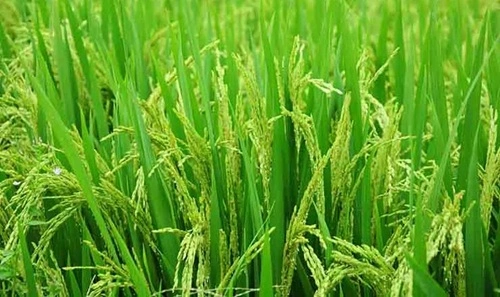Paddy is one of India’s staple crops, which is used to feed a large portion of the population. Rice or Paddy also plays a key role in the agricultural GDP of the country. According to the first advance estimates for 2024-25, India’s production estimates are about 1199.34 lakh tonnes. These estimates show an increase in Paddy production from last year’s 1132.59 lakh tonnes.
Many states benefited from the good monsoons, proper irrigation, and infrastructure. These states dominate the output and benefit the economy. Paddy is a water-intensive crop, which also causes many states to stay behind due to a shortage of irrigation water. Here, we are going through the top 5 major paddy-producing states in India in 2025 based on this year’s estimated production.
The numbers are taken from the Agricultural Market Intelligence Centre PJTAU and the Government of India. Let’s get started:

1. Uttar Pradesh – 217.43 Lakh Tonnes
With an 18.1% share in the total national paddy output, Uttar Pradesh leads in paddy production for the 2024-25 estimates. The total production estimates show about 217.43 lakh tonnes, which makes UP the top state. This state has both a large area under cultivation and relatively good yields in many districts. The top regions with the highest production of paddy are Meerut, Ghazipur, Jaunpur, Barabanki, and Gorakhpur. These regions benefit from rainfed water and irrigation during the Kharif season. However, there are challenges like ensuring timely procurement, storage, and transport, which make it difficult for Uttar Pradesh to increase its production.
2. Punjab – 146.82 Lakh Tonnes
Punjab stands second in paddy production with its 12.2% share in total national output, which offers 146.82 lakh tonnes of rice for 2024-25. Punjab has a high level of irrigated farming, well-developed infrastructure, and a history of high yield rates. Considering the land under cultivation, Punjab has a higher yield than any other state, even if the size of this state is smaller in area. The top regions that dominate in paddy production are Amritsar, Ferozepur, Ludhiana, Mohali, and Tarn Taran. Consistent water supply via canals and tube-wells benefits farmers and allows them to get higher yields. However, Punjab is also facing environmental pressures like groundwater depletion, high input costs, and shifting policies for crop diversification.
3. West Bengal – 120.75 Lakh Tonnes
West Bengal produced about 120.75 lakh tonnes of paddy in 2024-25, which works out to roughly 10.1% of the national paddy output. Its geographical conditions, multiple growing seasons in some districts, and strong small-farmer participation give it an advantage. Key producing districts include Murshidabad, Nadia, Bardhaman, Hooghly, and Bankura. However, West Bengal is also dealing with challenges like a poor transport system, storage bottlenecks, price fluctuations, and occasional flooding.
4. Madhya Pradesh – 89.10 Lakh Tonnes
Madhya Pradesh has a contribution of 7.4% in total national output with its 89.10 lakh tonnes of paddy production in 2024-25. The state has expanded the paddy area, which has helped in increasing production from previous years. The top regions with the highest production of paddy are Narmadapuram, Jabalpur, Seoni, and Raipur-Adjacent areas. These regions have sufficient water resources and favourable monsoon rains to help with production numbers. MP production is also helped by governmental drivers to increase the area under irrigation, quality seeds, and the adoption of better farming practices.
5. Telangana – 81.74 Lakh tonnes
Telangana produced about 167.86 lakh tonnes of paddy in 2024-25, placing it among the top producers. This represents roughly 6.4% of India’s total paddy production. Major rice districts in Telangana include Nizamabad, Karimnagar, Warangal, Hyderabad region outskirts, and Khammam. This state is getting strong growth in paddy production through better seed varieties, better water irrigation management, and strong governmental procurements. The key challenges for Telangana are storage capacity, logistics for transportation of paddy to mills, risk of crop damage, and erratic weather.
Bottom Line
The above five states combined share is about 55% of the total national paddy output in 2024-25, which makes these states crucial for the livelihood of farmers, staple food for domestic demands, and the country’s economy. Sustaining and increasing paddy production depends on better infrastructure, resilient varieties, improved water management, reducing losses post-harvest, and responsive procurement. Considering the climate change and flooding issues in September of 2025, there is a need to take strong steps toward fixing the root causes to keep the agricultural infrastructure intact.